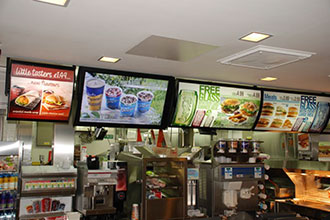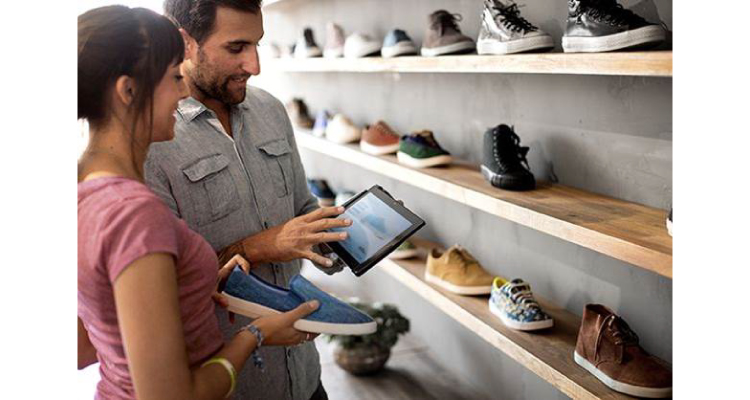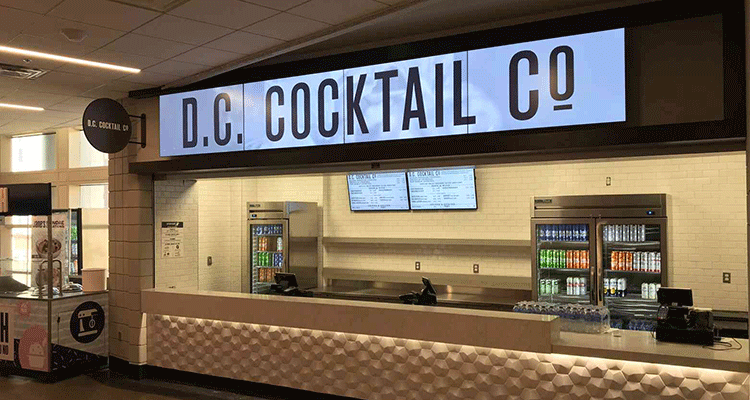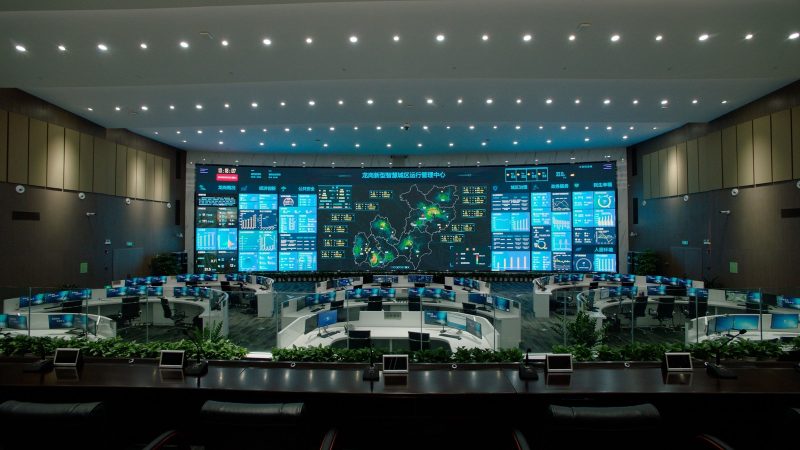Digital Menu Systems Driving Sales at UK McDonald’s Stores
 McDonald’s stores in the United Kingdom have been steadily testing and expanding the use of customer-facing digital display systems, as the quick service restaurant giant seeks innovative new ways to increase footfall, communicate broader menu options, and boost average customer spends.
McDonald’s stores in the United Kingdom have been steadily testing and expanding the use of customer-facing digital display systems, as the quick service restaurant giant seeks innovative new ways to increase footfall, communicate broader menu options, and boost average customer spends.
Digital displays are now used in hundreds of stores — fully guided by The Linney Group and using ComQi’s EnGage digital content and campaign management platform. Based on clearly identified positive sales impacts, the solution continues to grow in scope and scale.
The Challenge
McDonald’s United Kingdom started looking at customer-facing digital display systems, as it considered solutions for increasing foot traffic and average customer spends, and dealing with a diverse range of new menu options. The longtime burgers, shakes and fries offer was being supplemented by new offers like premium coffees.
The company’s central office and franchisees were also watching the retail industry and some of their food services competitors starting to adopt digital in their premises, and wanted to begin testing the value and impact.
Initial Testing Using Non Menu-board Channels
To increase guest counts in stores, McDonald’s started testing digital window displays along selected high traffic streets, working with The Linney Group, a multi-disciplinary marketing firm also based in the UK. Six stores were equipped with a special translucent film applique on store windows that provided a display surface for video projectors that were mounted inside the stores. The projection system made full-motion messaging appear on windows to people passing by on the sidewalk.
Foot traffic and sales figures both suggested the projection set-up was recovering costs, but the overall results were not judged significant enough to warrant the capital investment needed to expand the project beyond the test sites.
Bringing the McDonald’s Message Inside
The same year, McDonald’s UK started considering options for behind the counter, particularly its horizontal rows of backlit printed menu displays. With a larger, increasingly diverse set of items for sale, digital display was seen as a way to increase promotion on premium items — such as coffees, breakfast orders and high-cost items — without adding more static signage.
Digital menu displays were identified as a powerful tool to rotate through a series of promotional messages that had the potential to drive sales and boost overall transaction averages by inspiring shoppers to buy more than just the standard menu options.
After a full review of the digital opportunities, the McDonald’s UK team approved a plan that concentrated on front counter merchandising. A tender was issued for the software platform and digital displays.
First View of the Impact
Working with Linney, McDonald’s selected the ComQi digital signage content management system and a rugged player PC for a technical trial in two stores.
The back of counter areas in Quick Service Restaurant stores are inherently challenging for any technology solutions provider, because of the heat and potpourri of dust, oils and food particles stirred up in food preparation, and by the steadily shifting ballet of cooks and counter staff.
The trial was used to:
- Assess whether PCs and displays could operate without incident in the harsh environmental conditions.
- Evaluate the aesthetics of a digital display nested with traditional translite menus.
- Test whether content could be effectively distributed and managed from a remote office.
With no issues seen at the first two sites, the program was expanded to 20 sites, digging deeper into the operating implications such as content programming and the first tangible indications of sales impacts. The CMS from Comqi system provided the network sophistication to handle complex datasets for a variety of products and prices to be displayed.
McDonald’s then broadened the pilot program to 43 stores and focused heavily on a full sales analysis of the impact of screens in those stores, including total sales, average check sizes and the product mix. The new test also gave careful consideration to the positioning and prominence of the digital screens, locating them off-centre and neatly aligned with the static translites.
Positive Sales Impact
Data coming back from the field suggested the digital displays had a distinctly positive impact on sales figures. Intriguingly, the best results were at the smaller stores, which have less translite menu space available. Average check size grew 1.4 percent overall, averaging 3 percent for the small and medium stores.
The testing was done against a set of control sites with similar size, footfall, customer profile and sales figures, to get a clean read on the impact of digital in the stores. The result: Content on screen positively affected purchase patterns.
Beautiful coffee animations played from opening through mid-morning drove coffee sales up an average of 4.5 percent across the 43 test stores.
Premium and high margin products played from mid-morning to close – in six different day-part time slots – and had an even more dramatic effect:
- Chicken Selects sales went up 11 percent
- McFlurry sales went up 6 percent
The tests clearly showed how well presented, thoughtfully scheduled and target promotional messaging in the stores directly, positively affected purchasing behavior and bottom line revenues.
Lessons Learned
One-to-one intercept surveys done by research interviewers at six stores measured consumer attitudes and perceptions. The response to the rotating messaging was positive, and when customers were asked what they thought of the digital screens, most hadn’t even noticed they were digital.
“It looks right with the new decor in here – a bit more modern and a bit continental,” said one interviewed customer. “It makes me think that they are putting more effort into the food, as well.”
Interviewed store staff also gave the digital system high marks — both for the sophistication it brought into the stores, but also the central content controls that eliminated the need to manually switch out promotional translites. Employees were able to use the EnGage CMS to automatically micromanage content including newly featured products and pricing.
What’s Happening Today
There are now some 200 stores using the system, and there are plans to double that number as more franchisees opt in to a program managed by Linney. To meet the increasingly complex scheduling requirements, EnGage is delivering dynamic messaging for each store and managing local store pricing. Each player is able to display the correct content at each location based on each store’s particular size and layout. The media player ‘reads’ the conditional expressions set on the file and cross-references them with the store’s meta-data profile, to define the content playout.
Pricing is kept current and accurate with daily pricing data being securely uploaded from McDonald’s McMenu system. Content Flash files read the xml pricing data file and the player matches the store ID so that the correct pricing data-set is rendered into the Flash.
With the test period passed, McDonald’s UK continues to see the same impacts on transactions and sales promotions.





